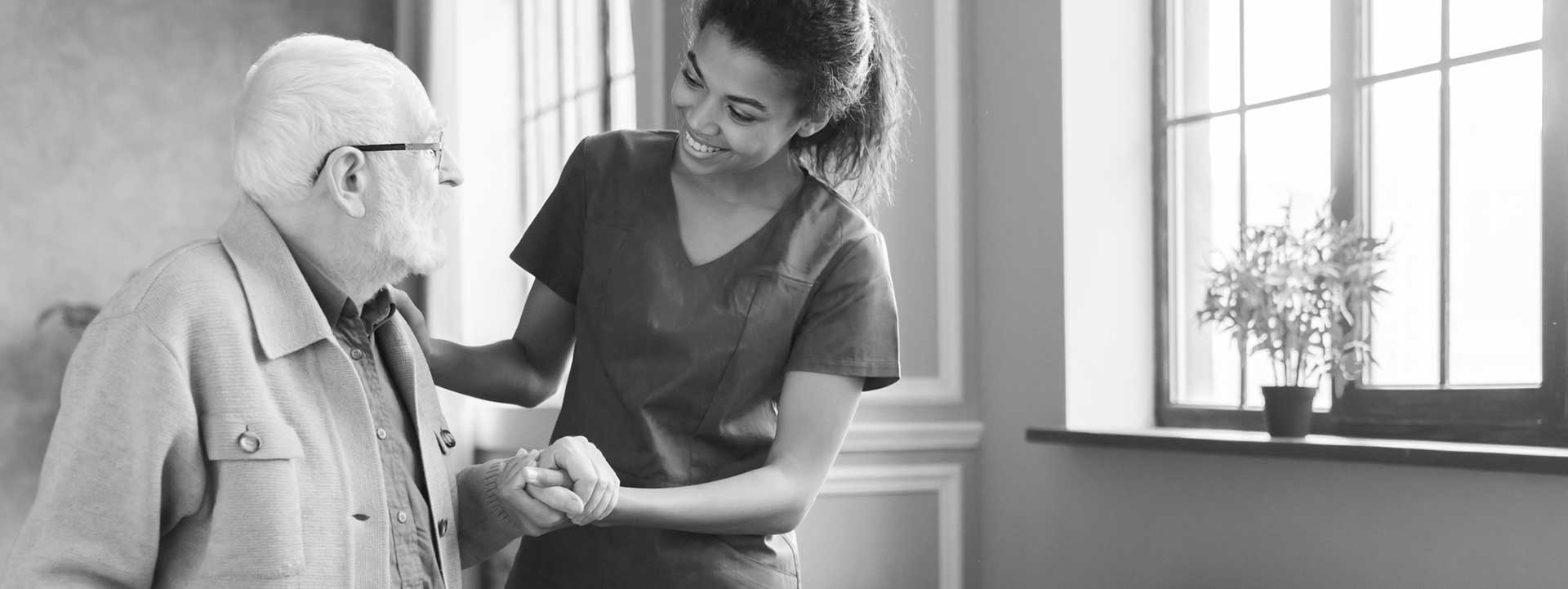On Your Feet: Common Foot Problems for Seniors

Did you know that each of your feet has 26 bones and 33 joints? The number of muscles, tendons, and ligaments is more than double that. Your feet are complex structures that are exposed to a lot of wear over your lifetime. Think about how much time you spend walking, running, and simply moving across different terrains and shifting positions.
As you age, the skin and fat pads on your feet become thinner. Circulation and feeling in your feet may decrease. Your bones may become more brittle and susceptible to injury. A twisted ankle, broken bone, blister, or cut can have a significant impact on your comfort and mobility. Taking care of your feet is an essential part of your overall health.
Inspect Your Feet Daily
It seems like a small task, but it can make a big difference. Take time each day to carefully look at your feet from all angles. A long-handled mirror can help you see the sides and soles more easily, or ask a family member or caregiver to help. Look for any changes in color, texture, or sensation that may indicate other health problems. Check for any cuts, sores, bruising, blisters, or swelling.
Move Your Feet
Don’t stay in one position for too long. Rotate your ankles, stretch your feet, walk around, and prop your feet up to help with circulation and reduce swelling. A gentle foot massage can also help to soothe sore muscles, decrease edema, and get blood flowing.
Keep Nails Trimmed
Ingrown toenails can be painful and affect your ability to walk. Trim your nails regularly to keep them from getting too long. Waiting until after you’ve showered or bathed can make them easier to cut. Soaking your feet in warm water for a few minutes can help too. Pay attention to whether your nails are becoming brittle, thickened, or discolored, as these can be signs of other issues.
Use a Moisturizer
Apply a hydrating lotion to your feet after bathing to improve absorption and moisture retention. Use special creams designed for dry, cracked, or callused feet to help smooth and soften rough patches. You want your feet to be soft with healthy skin.
Wear Good Fitting Shoes
It can be tempting to wear the same shoes you’ve had for years, but they can become worn and stretch out of shape. Plus, your feet can actually change in size as you get older. You want to make sure that you are wearing the correct size shoes and that they fit snugly without being too tight. If your shoes are too loose or too tight, they may flop around or rub which can cause painful blisters or sores.
Your shoes should have a firm sole to provide stability and protect the bottoms of your feet from anything you may accidentally step on. Look for shoes that have good traction as well to reduce your risk of slipping and falling.
Be Proactive About Your Foot Health Don’t brush off changes or pain in your feet. Talk to your doctor about any concerns you may have so that you can receive proper treatment. An in-home caregiver can help you to manage daily foot care such as applying lotion, trimming your nails, and checking for cuts or sores. They can assist with scheduling doctor appointments, providing transportation, and creating a safer home environment. Contact Always Best Care at (951) 582-2566 to schedule a free consultation and learn more about how you can benefit from in home-care in Las Corona, CA.





